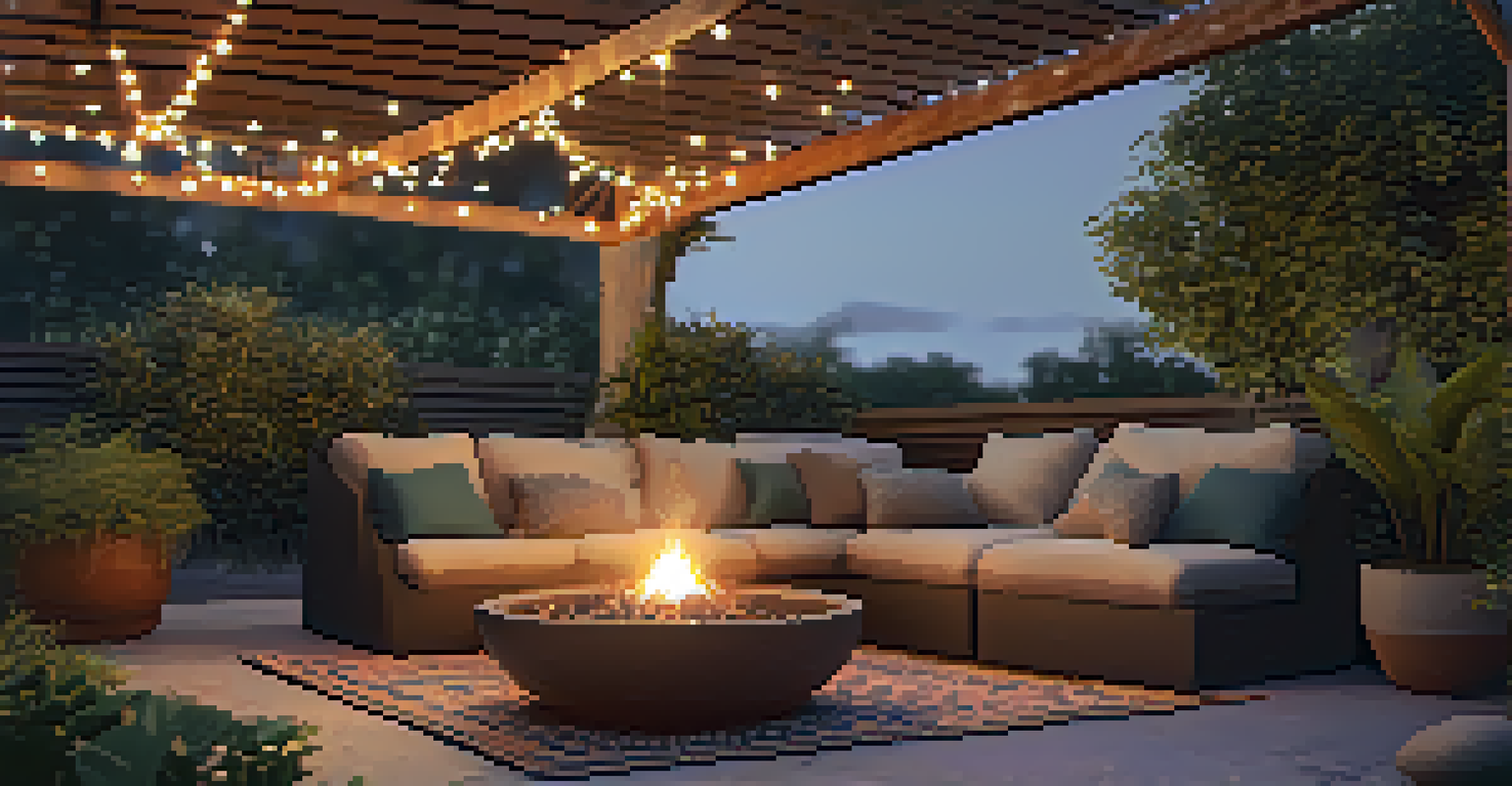Designing Outdoor Spaces for Multi-Generational Living

Understanding the Needs of Multi-Generational Families
Multi-generational living often includes diverse age groups, each with unique needs. From toddlers to grandparents, it's essential to recognize what different family members value in outdoor spaces. For instance, children may need safe areas to play, while older adults might prefer tranquil spots for relaxation.
The family is one of nature's masterpieces.
Creating a harmonious environment means considering accessibility features, such as paths that are easy to navigate for both the young and elderly. Think about incorporating elements like ramps or smooth walking surfaces that ensure everyone can enjoy the space without obstacles. This fosters inclusivity and enhances family bonding.
Ultimately, understanding the needs of all family members allows for thoughtful design choices. By prioritizing comfort and safety, you can create outdoor spaces that everyone looks forward to enjoying together.
Incorporating Versatile Seating Arrangements
Seating is a crucial aspect of outdoor spaces, especially for multi-generational living. Consider a mix of seating options, such as benches, hammocks, and picnic tables, that cater to various preferences. This way, family members can choose where they feel most comfortable.

Additionally, movable seating allows for flexibility, enabling families to rearrange their setup based on activities or occasions. For instance, if the grandchildren want to play games, they can create an open area by shifting chairs. This adaptability ensures that the space remains functional for everyone.
Design for All Ages
Creating outdoor spaces that cater to the unique needs of children, adults, and seniors fosters inclusivity and enhances family bonding.
By prioritizing versatile seating, you create an inviting atmosphere that encourages social interaction and togetherness. Whether it's a family picnic or a quiet afternoon, everyone has a spot to call their own.
Creating Safe Play Areas for Children
Safety is paramount when designing outdoor spaces for children. Creating designated play areas that are free from hazards can provide peace of mind for parents and guardians. Soft surfaces like grass or rubber mulch can help cushion falls, while fencing can keep little ones safe.
Gardening is a way of showing that you believe in tomorrow.
In addition to safety, consider incorporating engaging features like climbing structures or sandbox areas. These elements not only promote physical activity but also encourage imaginative play. When children feel free to explore and play, it enhances their development and creates joyful family memories.
A well-thought-out play area becomes the heart of outdoor family life. When children have a safe space to enjoy, adults can relax knowing they are nearby, making it a win-win for everyone.
Designing Relaxation Zones for Adults
Adults in a multi-generational household often crave spaces for relaxation and rejuvenation. Designing cozy nooks with comfortable seating, planters, and even a fire pit can create inviting areas for family members to unwind. These spaces can serve as peaceful retreats amidst the hustle and bustle of family life.
Incorporating elements like shade from trees or retractable awnings can enhance comfort during hot days. Consider adding outdoor rugs and cushions to create a warm atmosphere, inviting family members to linger longer. When adults have their retreat, it promotes well-being and relaxation.
Versatile Spaces Encourage Togetherness
Incorporating adaptable seating and relaxation areas allows families to enjoy outdoor activities and strengthen connections throughout the year.
Ultimately, these relaxation zones become places for adults to connect over a cup of coffee or share stories. They can foster deeper conversations and strengthen family ties, all while enjoying the beauty of the outdoors.
Integrating Gardens for Health and Happiness
Gardening can be a wonderful way for families to bond while promoting health and well-being. By integrating gardens into outdoor spaces, you provide opportunities for everyone to participate, from planting seeds to harvesting vegetables. This shared activity fosters cooperation and gives everyone a sense of pride in their contributions.
Consider creating raised garden beds that are accessible for all ages, allowing even those with mobility challenges to participate. Additionally, incorporating native plants can reduce maintenance while enhancing the beauty of the space. Gardening not only beautifies your home but also encourages healthy eating habits.
Involving family members in gardening activities can create lasting memories and teach valuable life skills. Ultimately, a garden becomes a living testament to the family's collective efforts and love.
Utilizing Outdoor Lighting for Safety and Ambiance
Effective outdoor lighting is essential for both safety and creating the right atmosphere. Well-lit pathways and common areas can help prevent accidents, especially for older adults navigating the space at night. Options like solar-powered lights or motion sensors can enhance safety without overwhelming the environment.
In addition to safety, consider using softer lighting to create a warm and inviting ambiance for evening gatherings. String lights or lanterns can transform your outdoor space into a cozy retreat, perfect for family dinners or stargazing nights. The right lighting can set the mood for memorable family moments.
Gardening Brings Families Together
Integrating gardens into outdoor spaces encourages collaboration and teaches valuable skills while promoting health and well-being.
By carefully planning outdoor lighting, you ensure that your space remains functional and inviting after the sun goes down. This thoughtful design choice enhances the overall experience for everyone, from children to grandparents.
Planning for Seasonal Changes and Activities
Designing outdoor spaces for multi-generational living also means considering seasonal changes. Creating adaptable spaces that can be enjoyed year-round is essential for maximizing family time. Features like covered patios or gazebos can provide shelter during rainy days, while sunshades can offer relief during hot summers.
Incorporating elements for different seasons, such as fire pits for winter gatherings or misting systems for summer, allows families to enjoy outdoor spaces no matter the weather. This flexibility encourages families to spend quality time together throughout the year.

Ultimately, designing with seasonality in mind ensures that your outdoor space remains a vibrant hub of activity, allowing for everything from cozy winter gatherings to lively summer barbecues. This thoughtful approach can strengthen family bonds as they create cherished memories together, no matter the season.